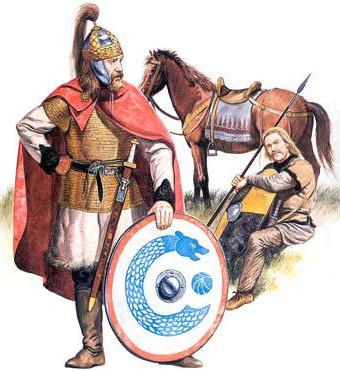
Gothic warriors from the 6th century AD.


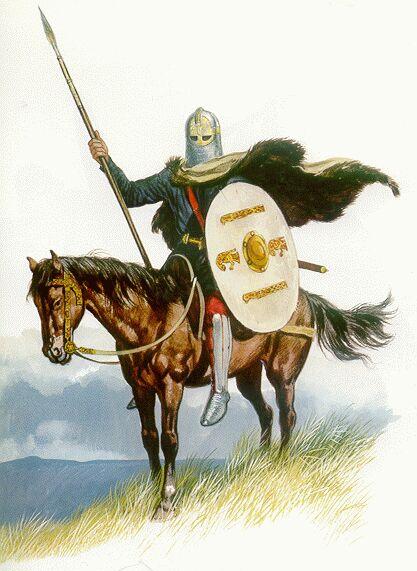
 Most Germanic horsemen carried a shield and a spear though the footmen sometimes carried multiple spears; at the start of a battle these were thrown at the enemy and the last one was saved for close combat, according to Tacitus the Germans were able to throw this spears to immense distances, some types of throwing spears were even equipped with a leather loop for the fingers so that they could be hurled even further.
Most Germanic horsemen carried a shield and a spear though the footmen sometimes carried multiple spears; at the start of a battle these were thrown at the enemy and the last one was saved for close combat, according to Tacitus the Germans were able to throw this spears to immense distances, some types of throwing spears were even equipped with a leather loop for the fingers so that they could be hurled even further. In contradiction to popular belief the sword was not used as a primary weapon, in most cases a warrior used a spear for that and switched to his sword for fighting close quarters or when he lost his spear.
In contradiction to popular belief the sword was not used as a primary weapon, in most cases a warrior used a spear for that and switched to his sword for fighting close quarters or when he lost his spear. (Tiwaz rune), which represented victory.
(Tiwaz rune), which represented victory.


|

|

|
| An ancient northern European flint dagger from 3000BC that was found in Denmark. | This is a drawing I made to give you an impression of what an early Germanic dagger may have looked like, it is based on various daggers that were found in northern Europe. | Another drawing of me that shows a reconstruction of the early European sword design that was used during the Bronze Age. |
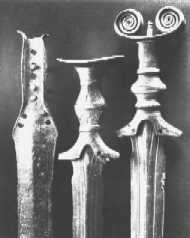
|

|

|
| Bronze Age swords found in southern Germany, the origin of this swords are believed to be either Celtic or Urnfield culture though the early Germans may have used similar designs. | A late Pre-Germanic knife from 700BC that was probably used for sacrificial purposes and other rituals, found in a peat bog near Schoonebeek, the Netherlands. |
Germanic iron longsword from the 1st century BC that was found near the Dutch city of Lith. It was probably a Batavian sword that was fabricated locally. |

|

|
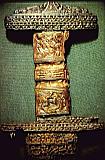
|
| Germanic ring sword from the 4th centuryAD. | Saxon sword that probably belonged to king Redwald (found at Sutton Hoo, England). | A beautifully decorated sword hilt from the Vendel period (6th centuryAD) in Scandinavia. |
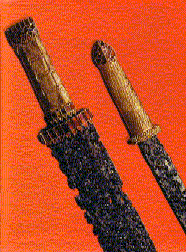
|

|

|
| Franconian swords from the Merovingian dynasty (400AD). | A standard Norse sword, this type was commonly used in the early Middle Ages, especially by the Vikings. | Norse sword found in the river Waal in the Netherlands, runic inscriptions on the blade tell us that the owner was "Adalfriid" |
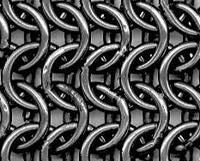 Most warriors did not use any armour because that was too expensive and since most people in those days were simple peasants they could not afford any expensive equipment, some warriors used leather armour that allowed some basic protection and the more professional warriors sometimes carried chainmail or breastplates.
Most warriors did not use any armour because that was too expensive and since most people in those days were simple peasants they could not afford any expensive equipment, some warriors used leather armour that allowed some basic protection and the more professional warriors sometimes carried chainmail or breastplates.
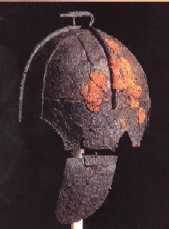
|
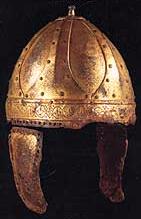
|
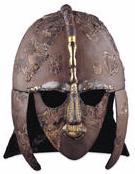
|
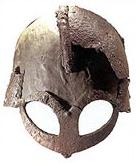
|
| Anglo-Saxon helmet with a small boar figure on top. | Franconian helmet with Roman influences from 525AD (Krefeld-Gellup, Germany). | The famous Sutton Hoo helmet, the nose, eyebrows, and a part of the ridge form a bird figure. | A good example of a Norse helmet. |
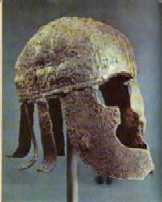
|
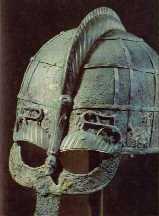
|
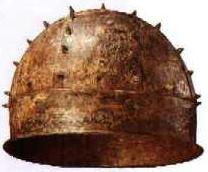
|
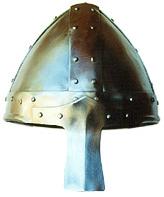
|
| Scandinavian Vendel helmet from Uppland, Sweden. | Another Scandinavian Vendel helmet from Uppland, Sweden. | Frisian iron helmet from the 9th century AD found in Groningen, the Netherlands. | The Spangenhelmet, this type was commonly used in northern Europe during the early Middle Ages. |
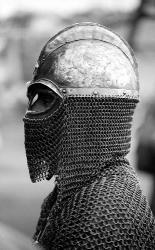
|
|||
| Modern reconstruction of a Vendel helm |
